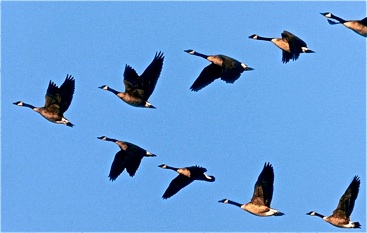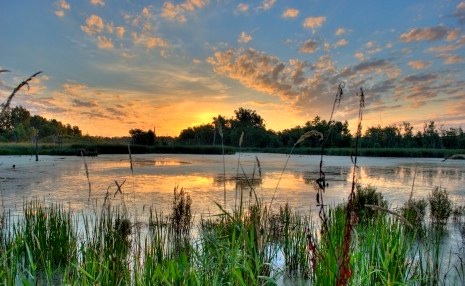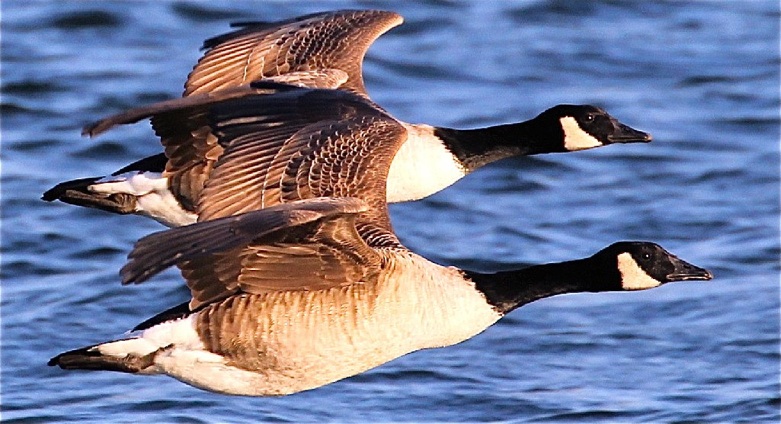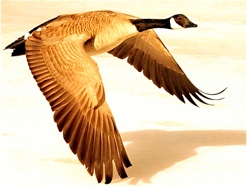The Love of a Winged One

As we got into the goose pit, there was a tiny stove in the corner. We lit it, but it didn’t seem to help much because that pit was as cold as ice. A goose pit is a deep rectangular ditch, about five or six feet deep, covered with a half roof with branches and leaves to give the appearance of a brush pile. Around the pit a hunter puts down goose decoys and shadows (goose like outlines cut from plywood), so it looks as if a bunch of geese are feeding around the brush pile. Crab Orchard is a national refuge for geese, and every year thousands of them fly down from Canada to keep warm and feed during the winter months. There is a lot of leftover corn and soy bean for them in the fields after the fall harvest.

About midmorning we decided that the day was a bust, and we thought it would be best to head back to town. As we stood up in the blind, we could hardly straighten up because of the cold. The heater was burning as hard as ever, but we hadn’t felt any heat from it. When I looked out over the decoys for the last time, I saw two big Canadians coming straight for us. It was as if we were watching a couple of fighter planes bearing down on us at 12 o’clock high. Roger gave them a feed call, and I stayed low while he watched them. He whispered, “I’ll take the goose on the left, and you take the one on the right.” So I waited what seemed to be an eternity. Then he stopped calling. I knew they were cupping their wings and coming forward to land. Roger slowly grabbed his Remington shotgun, the one held together with tape, and I reached for my gun, that Browning automatic that had been with me since I was a kid and had seen so many good hunts with me. He said “go” and we both raised up and pointed our guns forward and looked down our barrels. There they were, the biggest birds I’ve ever seen. Big black heads, huge muscular bodies enlarged from all that flying from boundary waters of Manitoba, Canada. My heart was racing. Roger shot first and dropped the one on the left. The bird to the right flared off, and I just kept watching it down my barrel. How great it looked! Like something from an art gallery. I couldn’t shoot. The goose that Roger shot was on the ground, flapping its wings, but the one that I was supposed to shoot was now out of range. I dropped the stock of my gun from my shoulder and gazed out to the front of the pit. Roger was complaining to me asking why I didn’t shoot, but I had no answer. It may have been the cold that froze my thinking, or it might have been that it just wasn’t my day to hunt, but all I knew was that I chose not to pull the trigger.

At that moment, when I knew Roger understood my thoughts, my love for life became more clear than ever. It’s so reassuring to know that at times when I’m flapping my wings and in a tailspin, there is someone out there who will come back around, be strong, and be there for me when I need them. The fact that the goose that had just lost its mate cared so deeply for its mate that it risked its own life to search for its downed companion was reason enough for me to let it live. If only more people in this life could be as deeply concerned for one another.
My wife has shown me this quality every day that we have been together, and I’m so proud to know that she has that kind of love within her. There will be times when we both need that kind of commitment and love, that kind of feeling about each other that reminds us that we can be everything we want if we stand together and help each other.
As I sat there looking at Roger’s dead goose, my spirits were high, and I noticed that the pit was finally warm. That old stove in the corner had finally done its job. As C. S. Lewis once wrote, “There is no sudden, striking, and emotional transition with love. Like the warming of a room or the coming of daylight. When you first notice the warmth, it has already been going on for some time.”

enough





